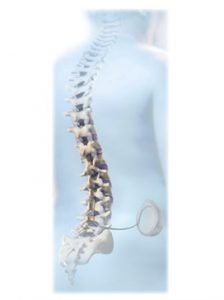Intrathecal Morphine Pain Pump Implant
For Leg And Back Pain Relief Caused By Failed Back Syndrome
Back and leg pain often has causes which either improve on their own or which the surgeon can correct (such as pressure on the nerve roots). Sometimes there is no easily correctable cause of the pain. Scar tissue around the nerve or chronic inflammation of the nerves such as arachnoiditis may cause leg and back pain.
When the neurosurgeon feels that open surgery to decompress the nerves is unlikely to help the pain, an operation to implant an intrathecal pain pump may be of benefit. The pain pump allows the delivery of medication directly into the spinal fluid which bathes the nerves. This allows a much lower dose of the medication to be given to the patient than would otherwise be required if the patient were to take the medication by mouth. The medication is delivered from a reservoir which is implanted under the skin.

Patients experiencing significant chronic lower extremity or back pain may choose to have this procedure.
During the implant procedure, that patient is taken to the operating room and put under general anesthesia. After turning the patient onto their abdomen, a small tube or catheter is placed into the spinal canal and then tunneled under the skin and connected to a reservoir which is also placed under the skin. The reservoir which contains the medication supply is typically placed in the soft tissue of the skin under the rib cage.
Patients are generally discharged home the day of or the following day of the procedure. They should keep the wounds very clean and dry.
Risks for the intrathecal pain pump procedure are low. However, potential risks for the surgery include bleeding, infection, injury to nerves, injured spinal cord, paralysis, and death.